Almost 50 years ago, Dave Page — then a professor of American history at the University of Washington and Western — was bouldering with his girlfriend on a beach in California. They were sitting in the sand. He looked at his ragged rock shoe and said to her, ‘I gotta get these things resoled.’ “And it struck me as so stupid — that I’d have to send them to Colorado, to the only guy who could fix them, and it would take six months,” Page remembers. Not long before, he had spent a couple of months cutting hiking boot uppers at a small factory in Kitzbuhel, Austria, to scare up some cash for a climbing bender. So he took matters into his own hands: He paid a call to a shoe repairman in Seattle and started working for him, gratis. When the business closed every evening at six, Page had the shop to himself, destroying boots and putting them back together. Not long after, he hung his own shingle — from his Seattle basement. “Did I learn the trade from a mentor? No. He didn’t know shit,” he says. “I learned how to do it myself.”
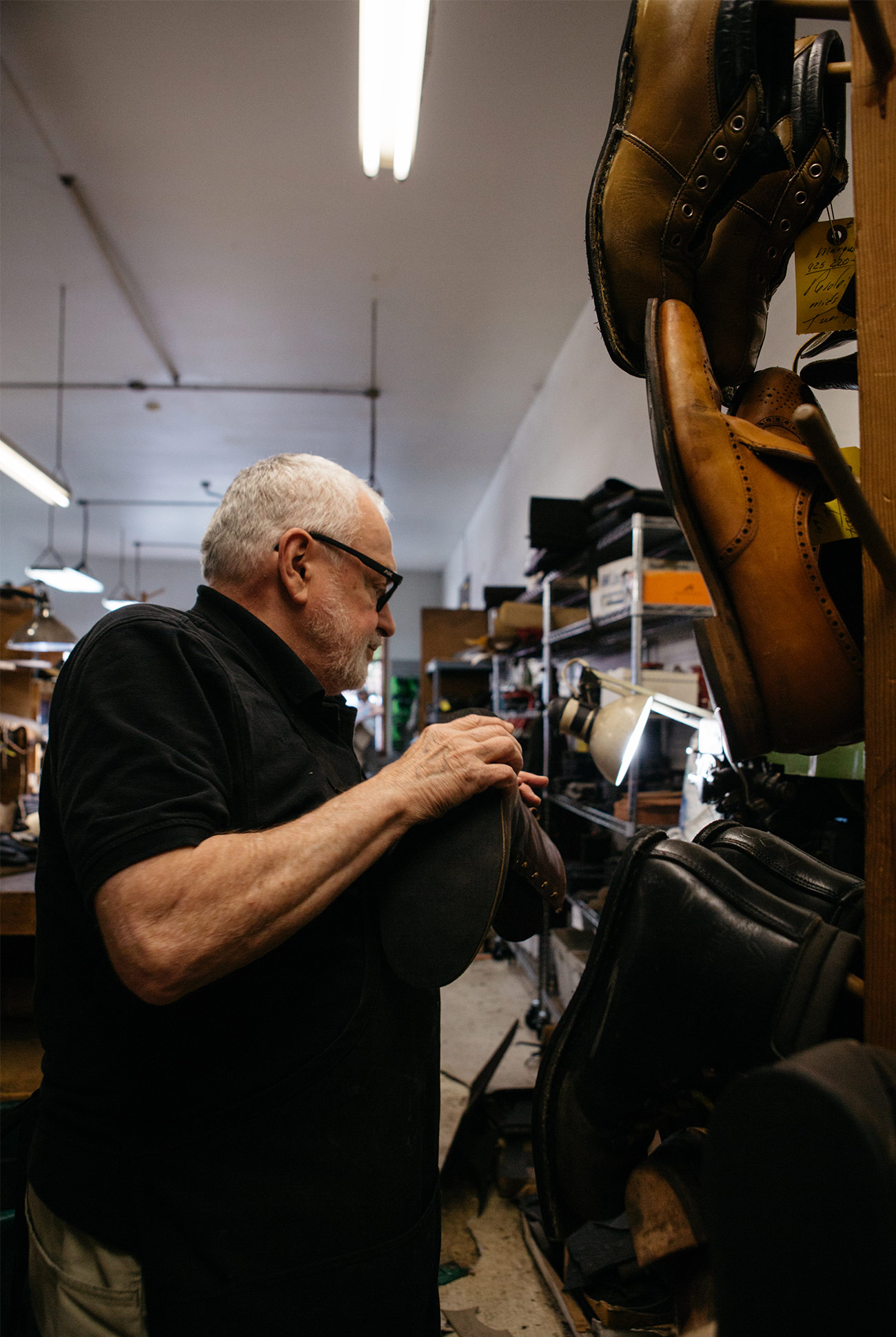
Now, at age 79, Page — and the eight young hiker-meets-hipster employees who lean over grinders, trimmers, sanders, breasters, blowers, stitchers and scrapers — is a legend in the world of boot repair. His shop, painted red, windows plastered with stickers, has been located in Seattle’s Fremont neighborhood for decades. He’s the go-to cobbler for all of the big hiking boot brands, from Asolo to Zamberlain. He can turn around a pair of vintage Raichles in a week. His name is singled out on REI’s repair website; he sometimes receives boots from as far away as New Zealand and Australia. His relationship with Vibram goes back 25-plus years, and he’s in the process of becoming one of its elite Diamond shops. “The majority of products he repairs are called ‘net fit,’” says John Mcloughlin, director of customer satisfaction at Vibram. “It means the upper actually drops into the sole, so if you make a wrong cut, the shoe is ruined. It’s extremely labor-intensive, and Dave [Page] is a master, one of the few people out there who will put in the effort.”
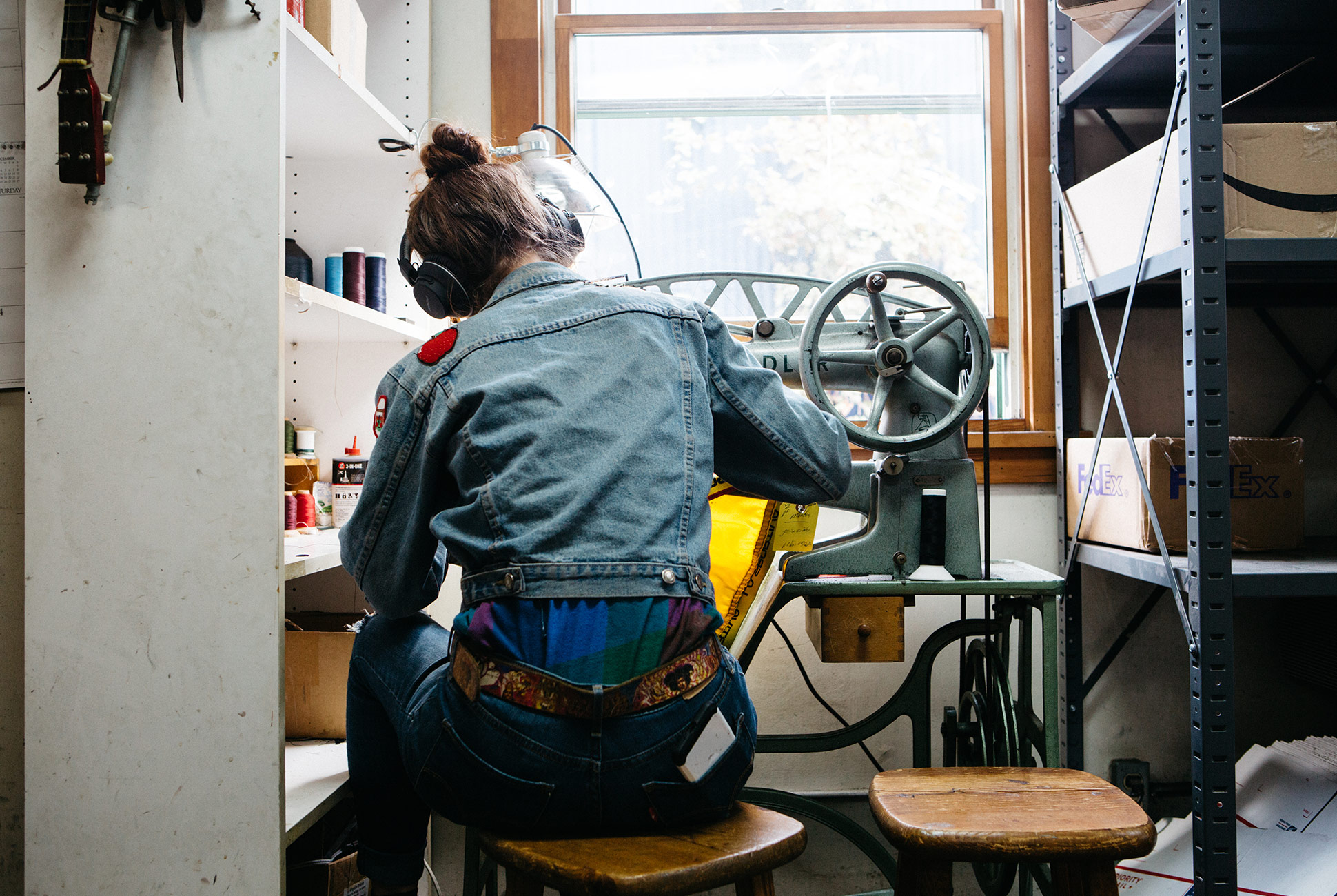
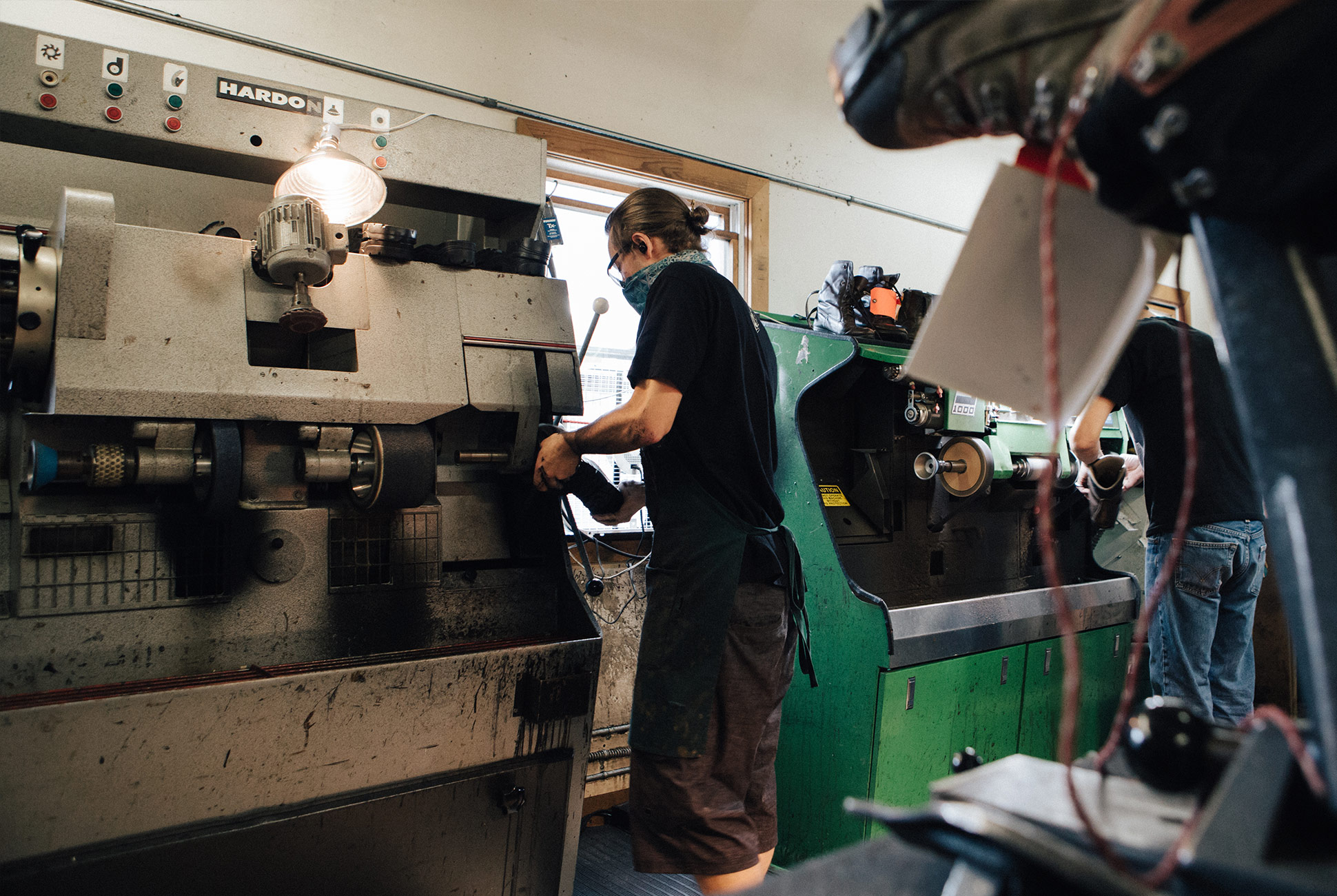
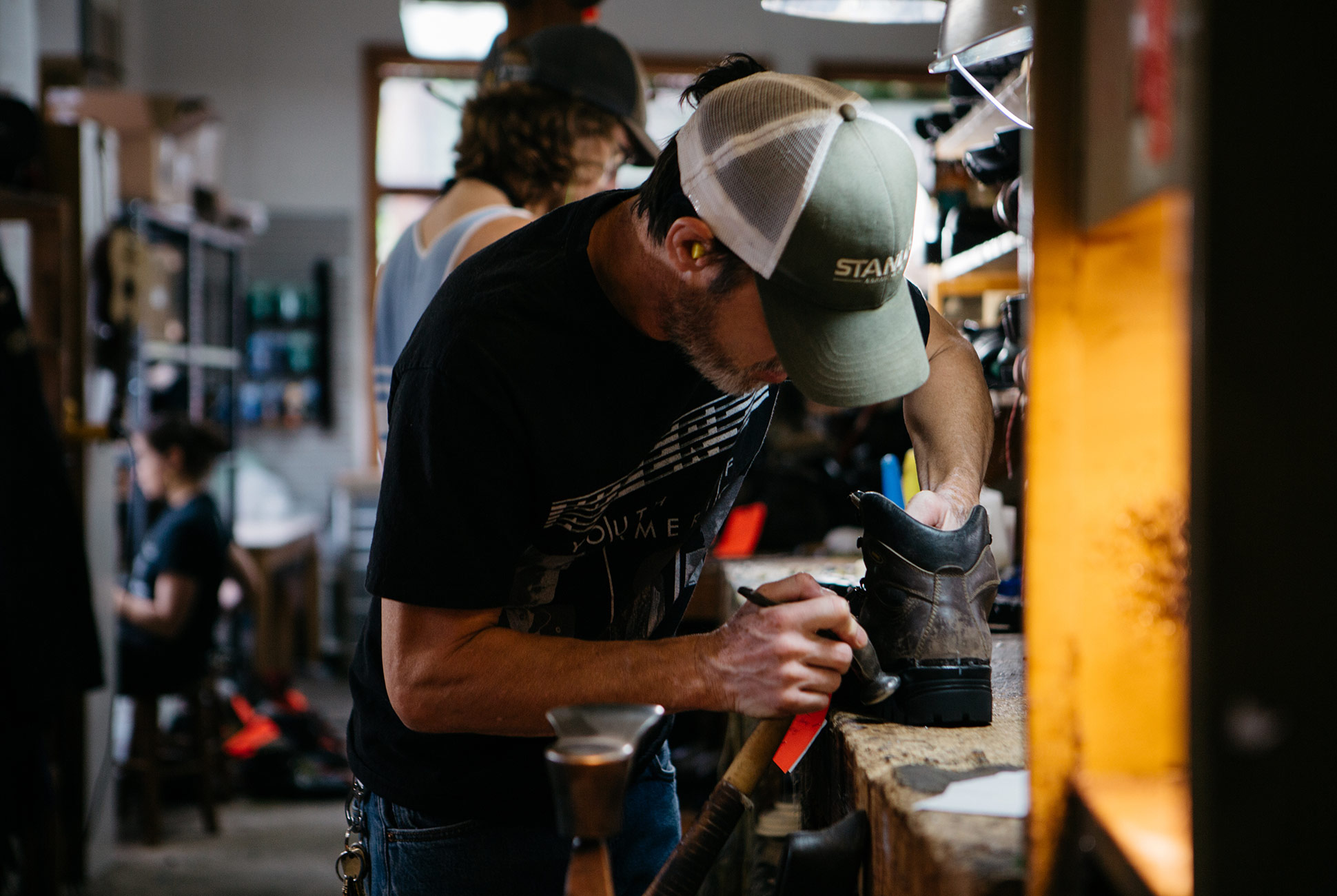
Back when George Mallory’s body was discovered on Everest, a forensic anthropologist and an Everest Scholar showed up, asking Page to help identify the maker of Mallory’s boots. World-renowned mountaineers like Ed Viesturs, the only American to summit all 14 of the world’s 8,000-meter peaks, have trusted Page with their footwear. For Viesturs, it started in the late 1970s with a pair of used Lowa Civettas with welts worn down to the boot edge. “I couldn’t afford new boots at the time,” he says. “You’d walk into his shop, everything smelling of fresh leather and oils,” says Viesturs. “Dave [Page] is a true craftsman. One of the best at what he does.”
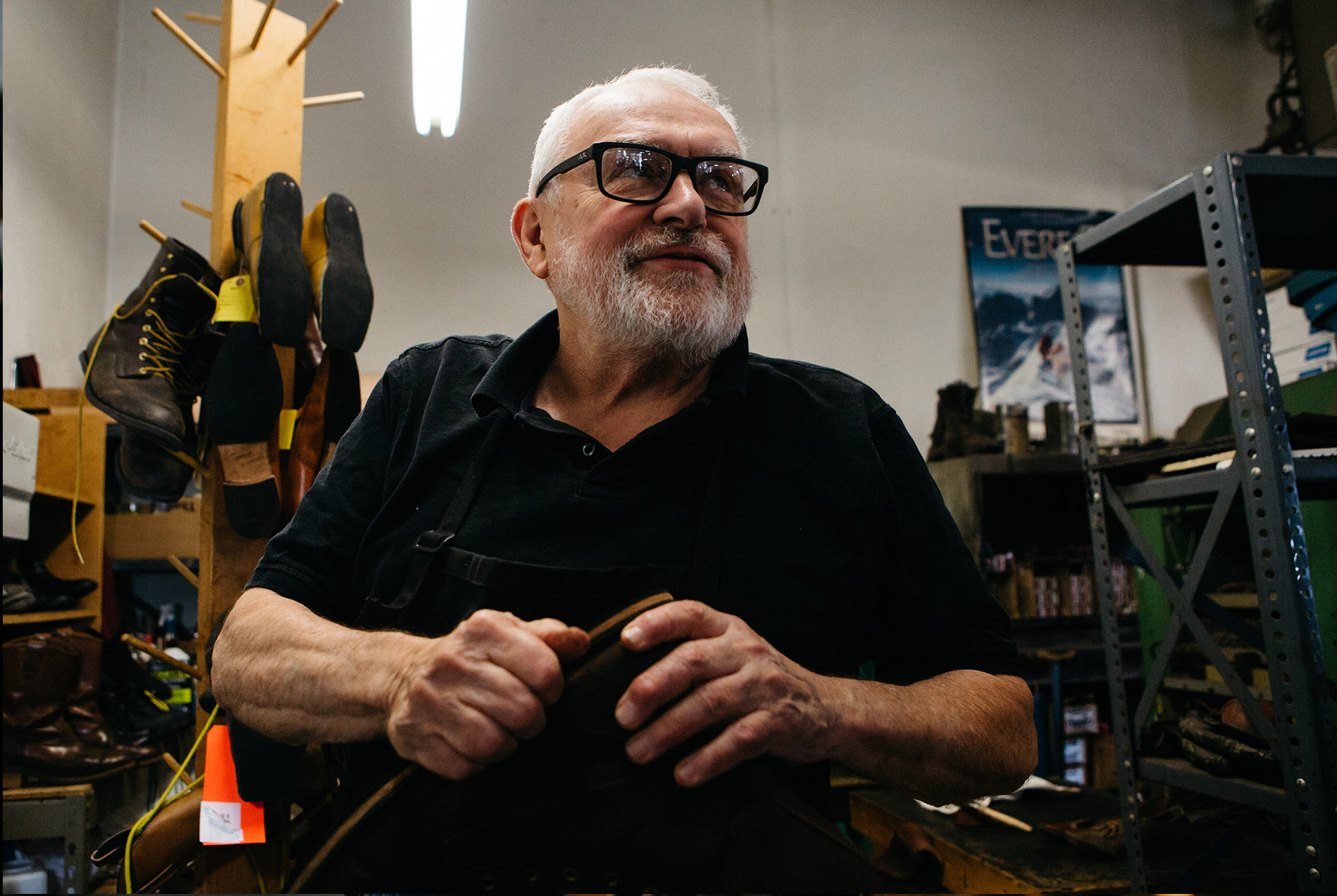
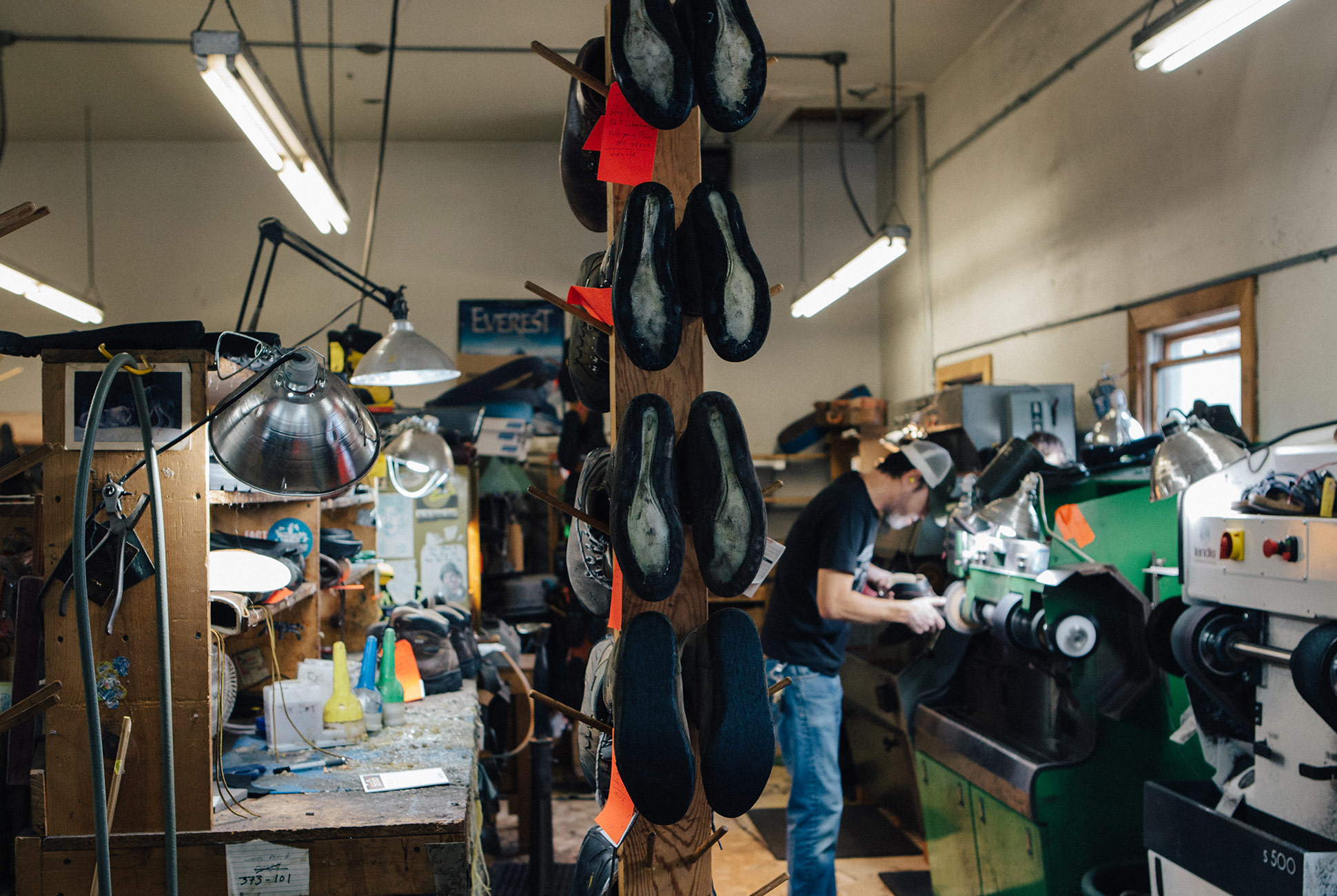
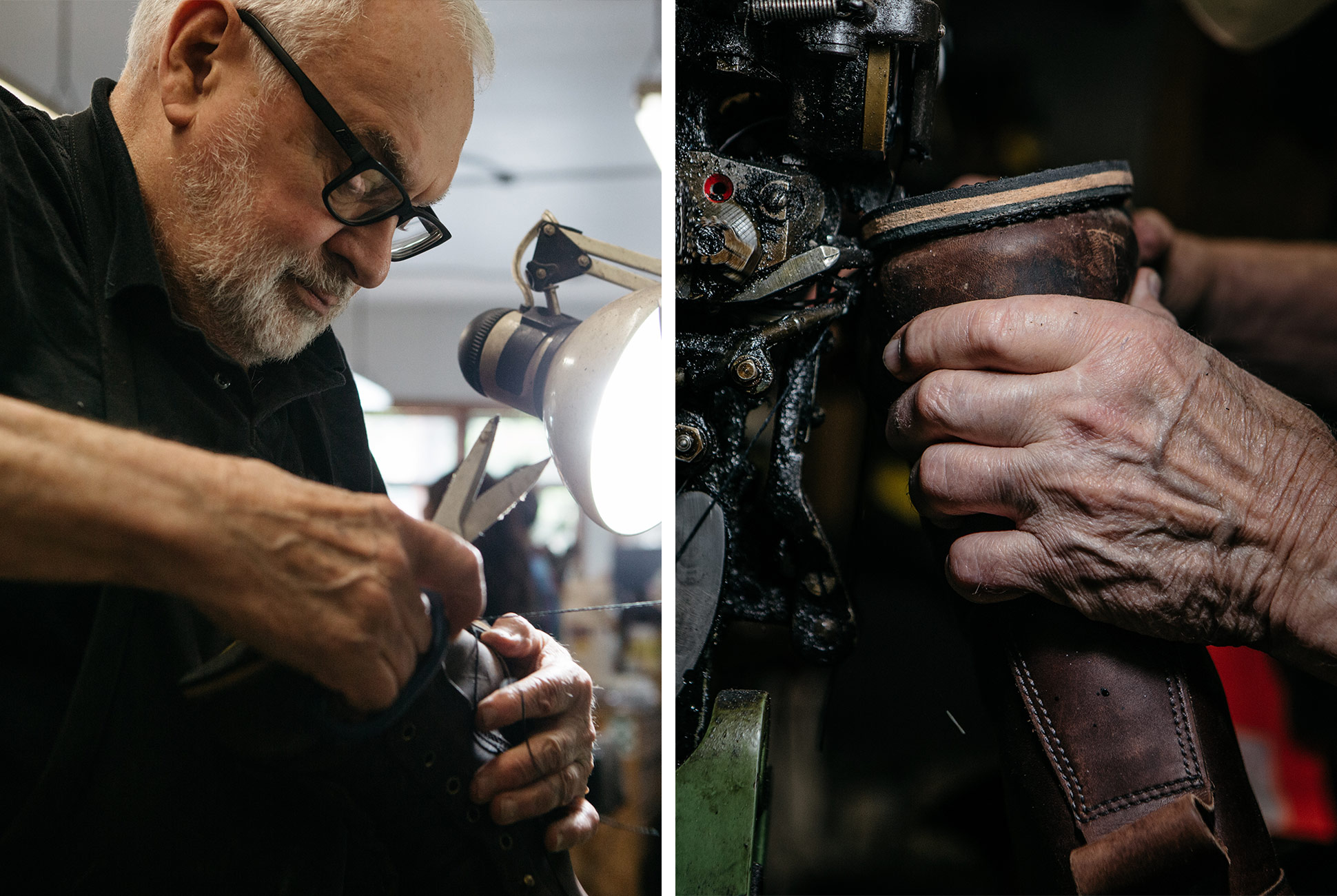
Though Page will take pretty much any footwear — Birkenstocks, high heels, telemark boots, duck boots, custom-made Lucchese cowboy boots — he made his name with hikers, climbers and mountaineers like Viesturs, partly because he is an accomplished outdoorsman himself. He scaled Himalayan summits; he made first ascents with the legendary Fred Beckey. The repair process hasn’t changed much: He peels off the worn sole with edge tools, brings the upper to a grinder and sands off the remnants of the sole, the polyurethane, the glue. He preps the boot for primer and hangs it on a rack to dry. He matches the correct sole to the boot, roughs it up. He reheats the boot to actuate the adhesive, then puts everything into a press so the cement makes good contact. Another grinder, with bristles, brushes off any extra glue for a clean line. Sealer is delicately applied onto the edge where sole meets leather. Though he won’t say how many boots the shop resoles a day, someone at the press whispers, “very close to a hundred.” Page will allow this: “I’m still the world’s largest repairer of hiking boots.”
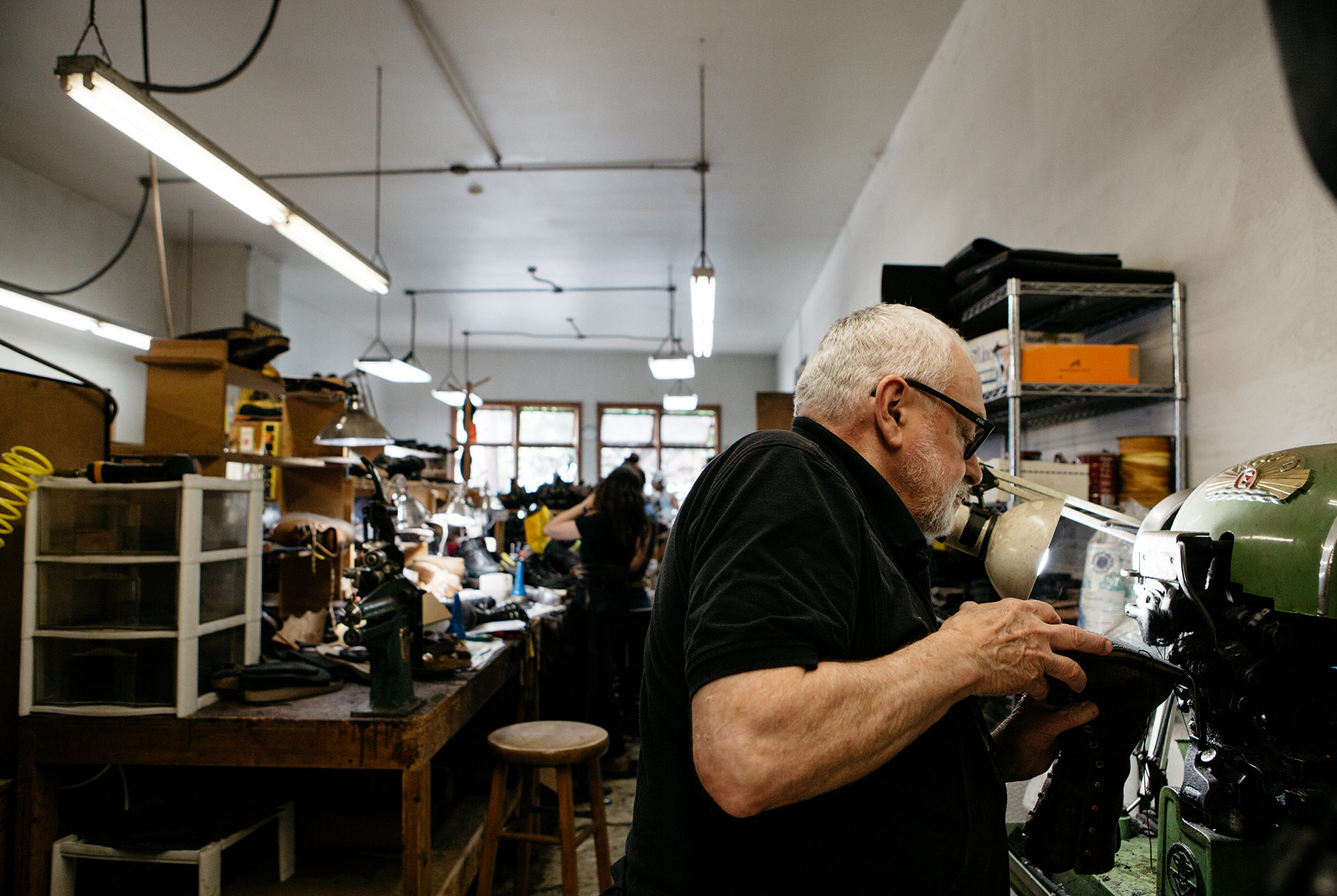
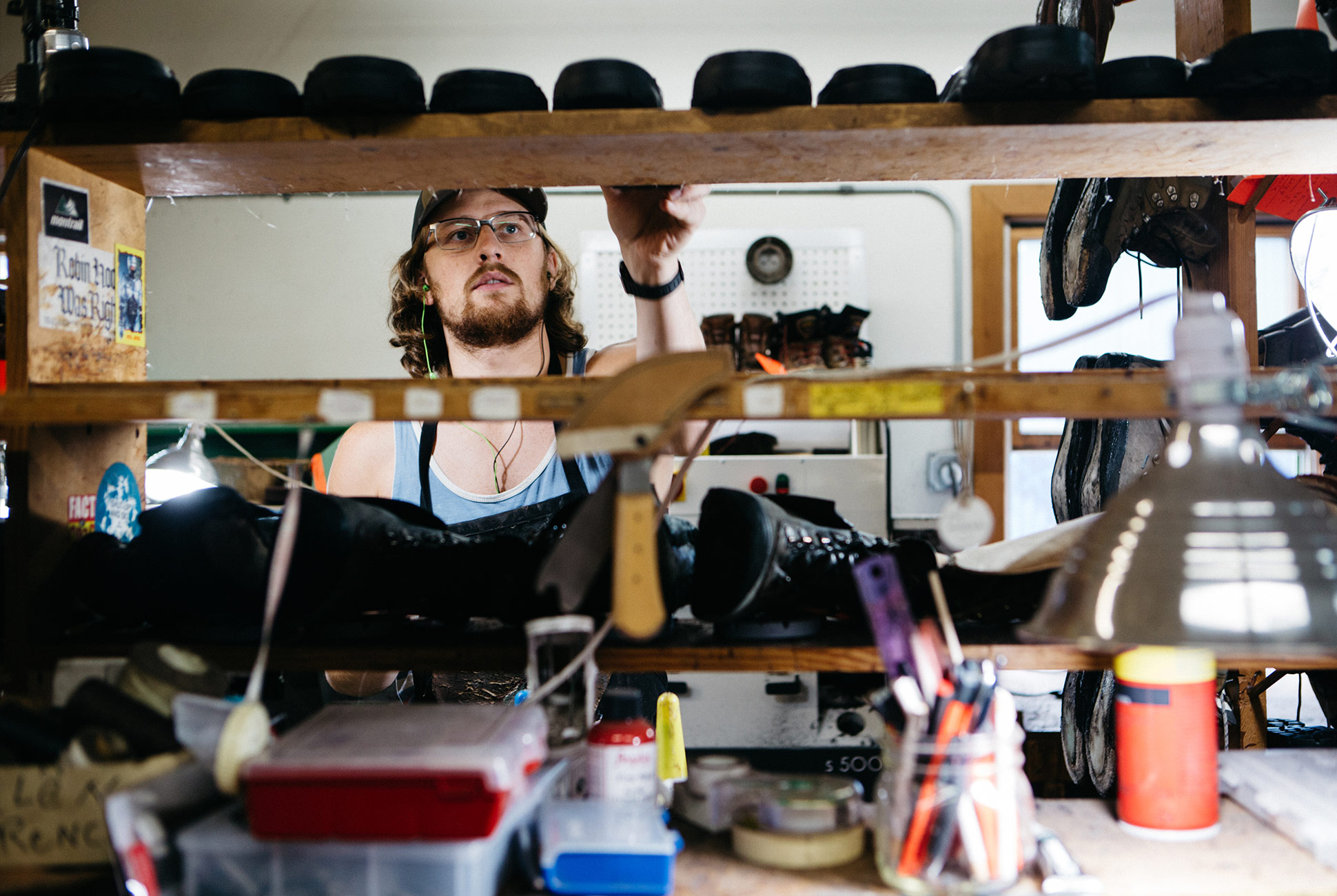
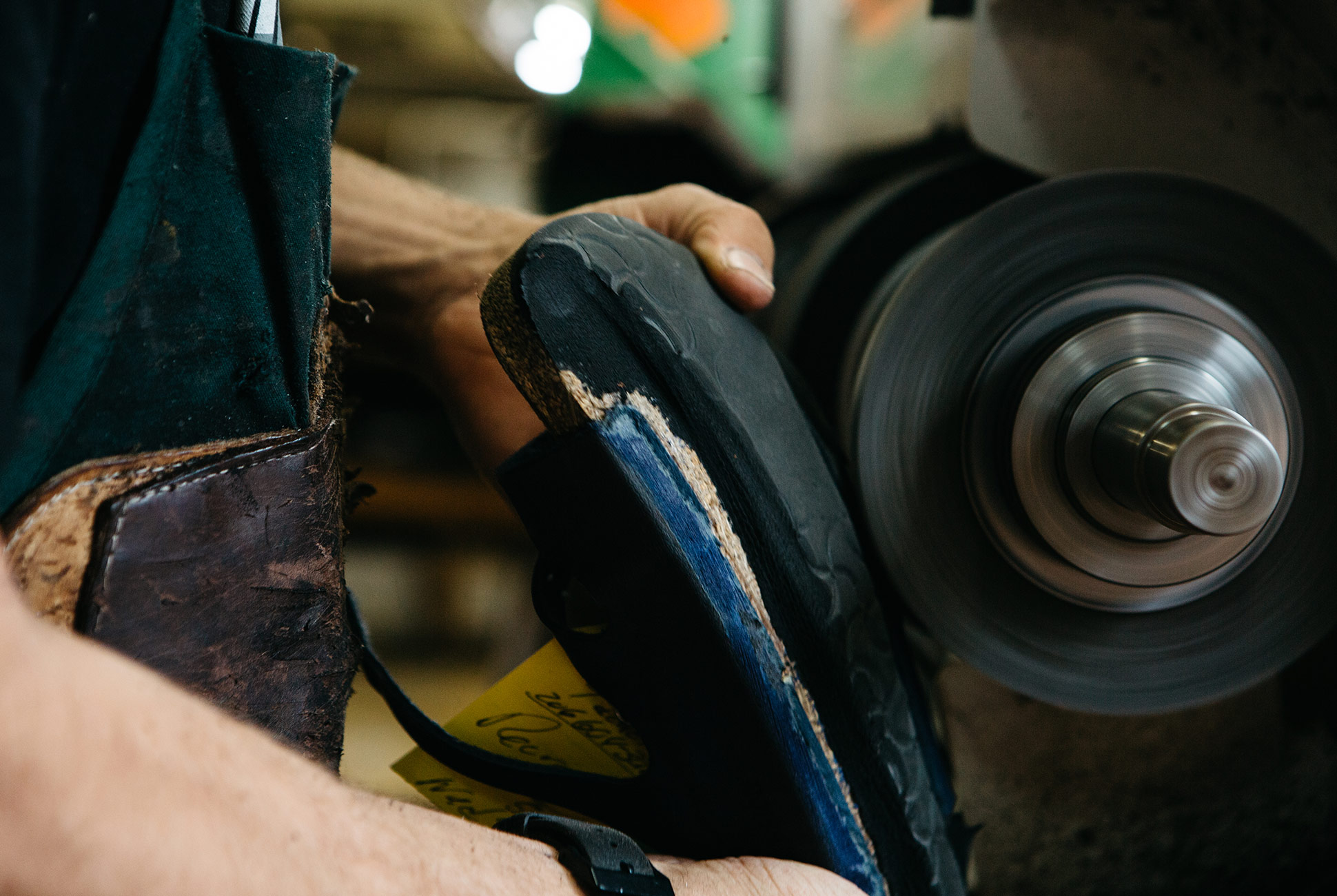
No wonder there’s a black note scribbled on the slightly grimy, otherwise blank back wall of the shop that reads: “HURRY UP!!!” Piles of wooden lasts, painted green, are piled on one table. Next to it sits a box full of brown polish jars (hellbraun, mittelbraun). The shelves are stacked with boot soles, heel plates, cork and leather scraps. La Sportiva climbing shoes, all hooked with yellow handwritten tags, share a table with boxes of giant chocolate muffins. The air has a bouquet of glue. The machines hum at a constant, white-noise pitch. Everything is covered in dust, oil, thread, or discards; it’s very much a place at work. One tall man (topknot, wire-rimmed spectacles, 30-ish) walks in with a pair of black Merrell Wilderness boots and describes how his weird big toe is wearing down the soles. A few minutes later, an older gentleman (head-to-toe beige, fedora) pulls a scuffed dress shoe off his foot and asks if it can be fixed. (It can.)
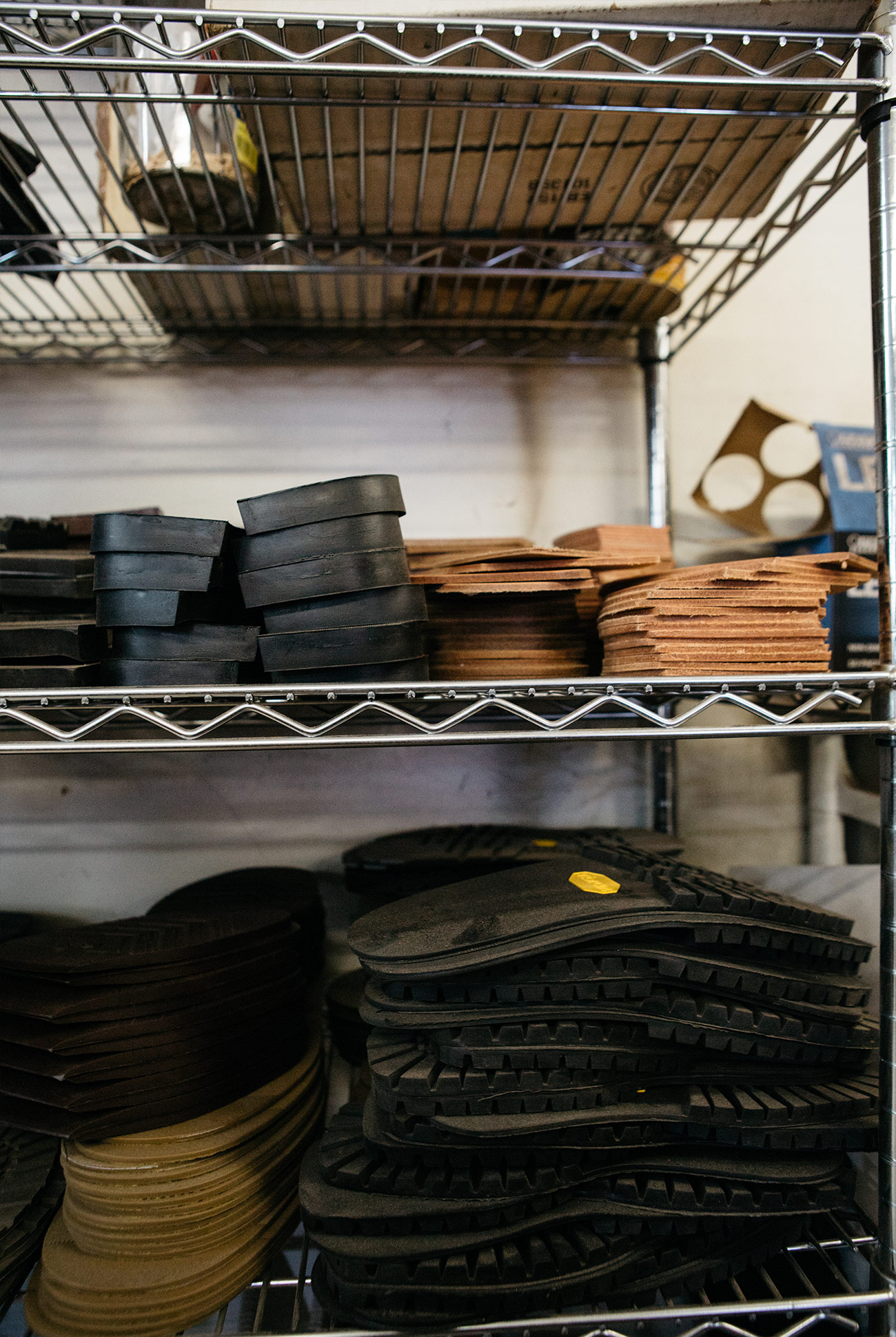
In a throwaway culture, it’s strange and wonderful to find a man whose life’s work is to refurbish and reuse, to be a listening ear for countless stories, trails, travels. “We always joke at how the osmosis shocks us,” Page says. “People just find us.” There’s the one about the guy from Seattle who sits next to a guy from Germany on a bench somewhere in Bhutan, and the German says he needs to send his busted boots all the way to a “Dave Page.” The one about the boots pecked apart by a Costa Rican parrot who had a thing for leather. The National Park rangers. The boots shipped from Hong Kong, Chamonix, Italy.
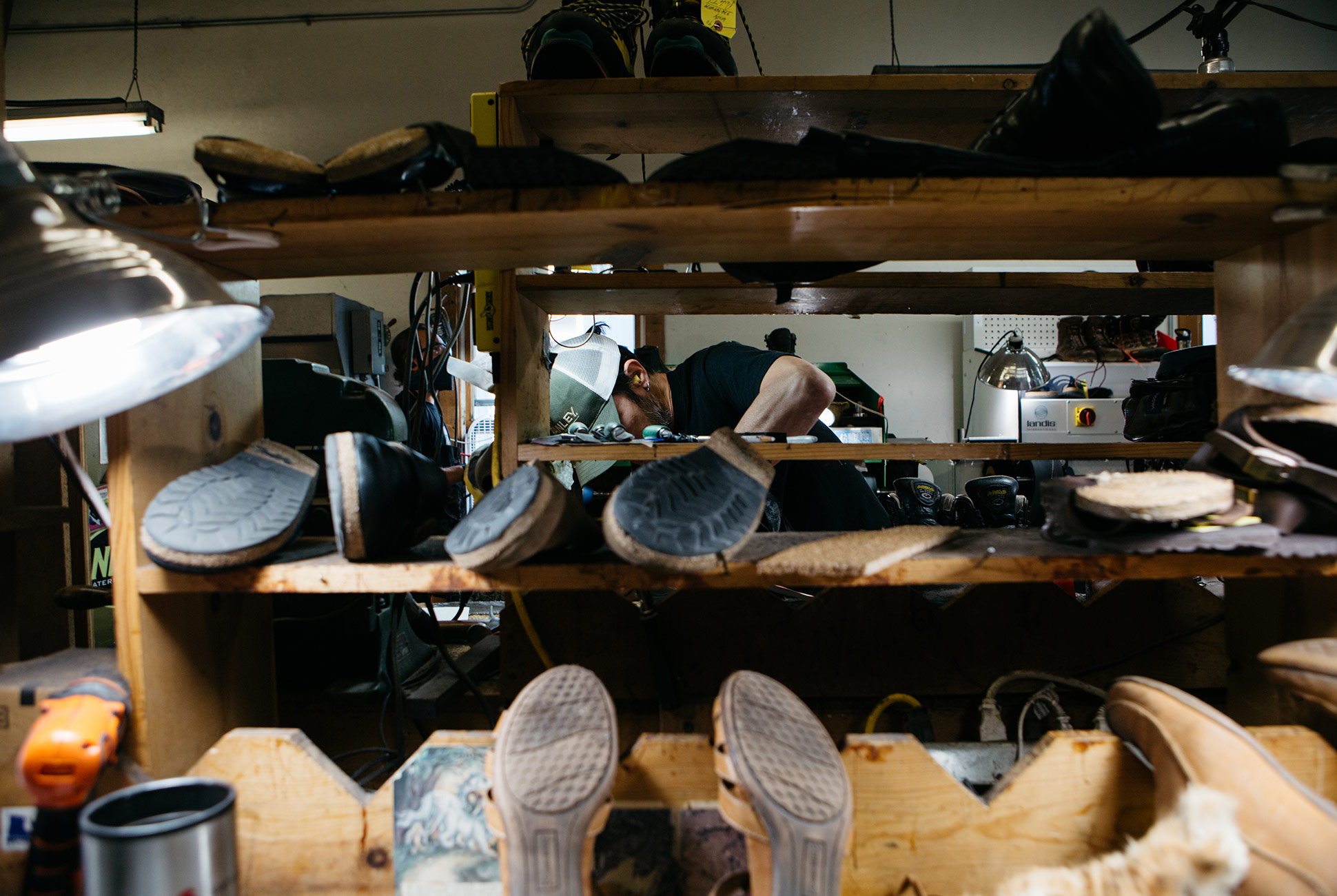
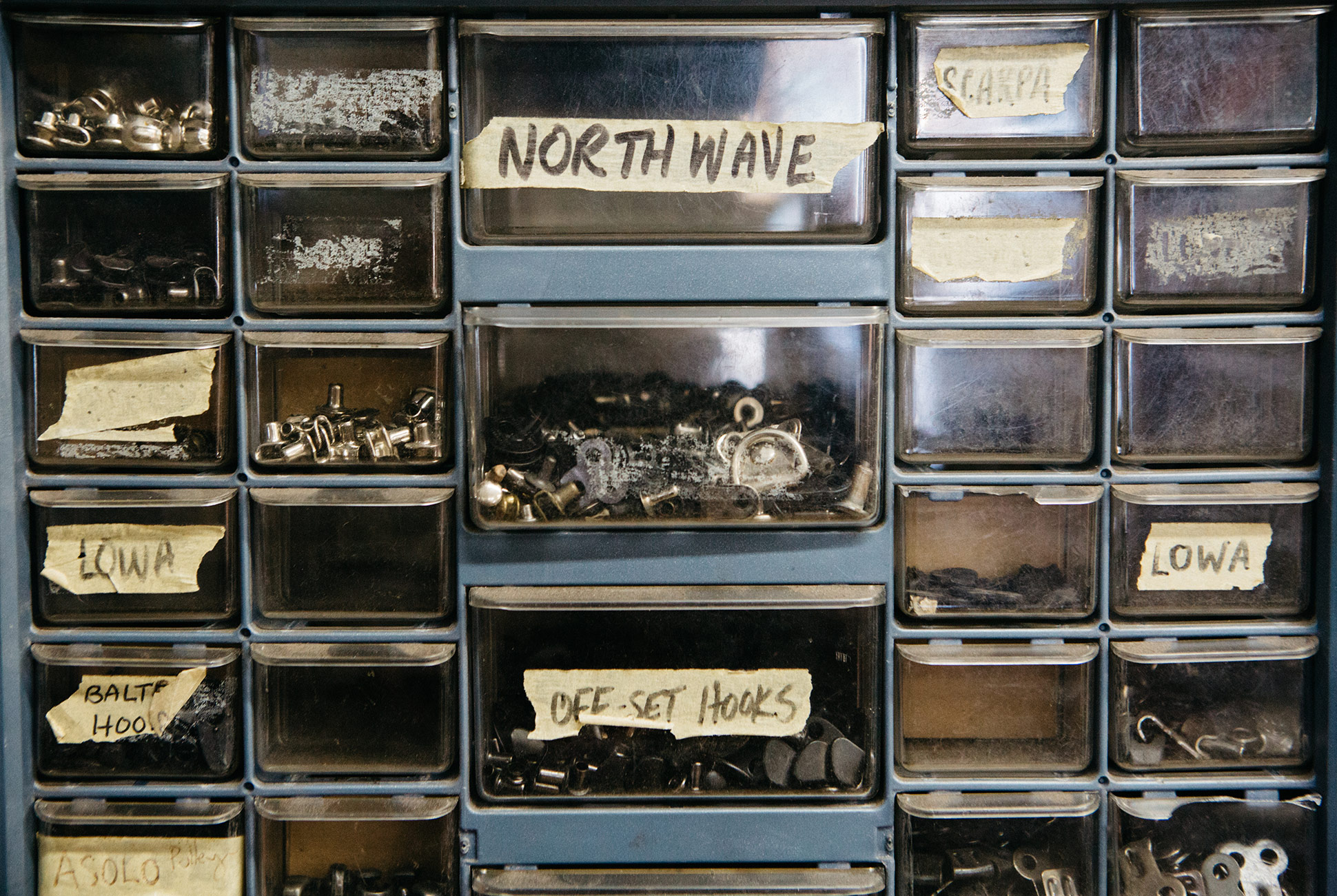
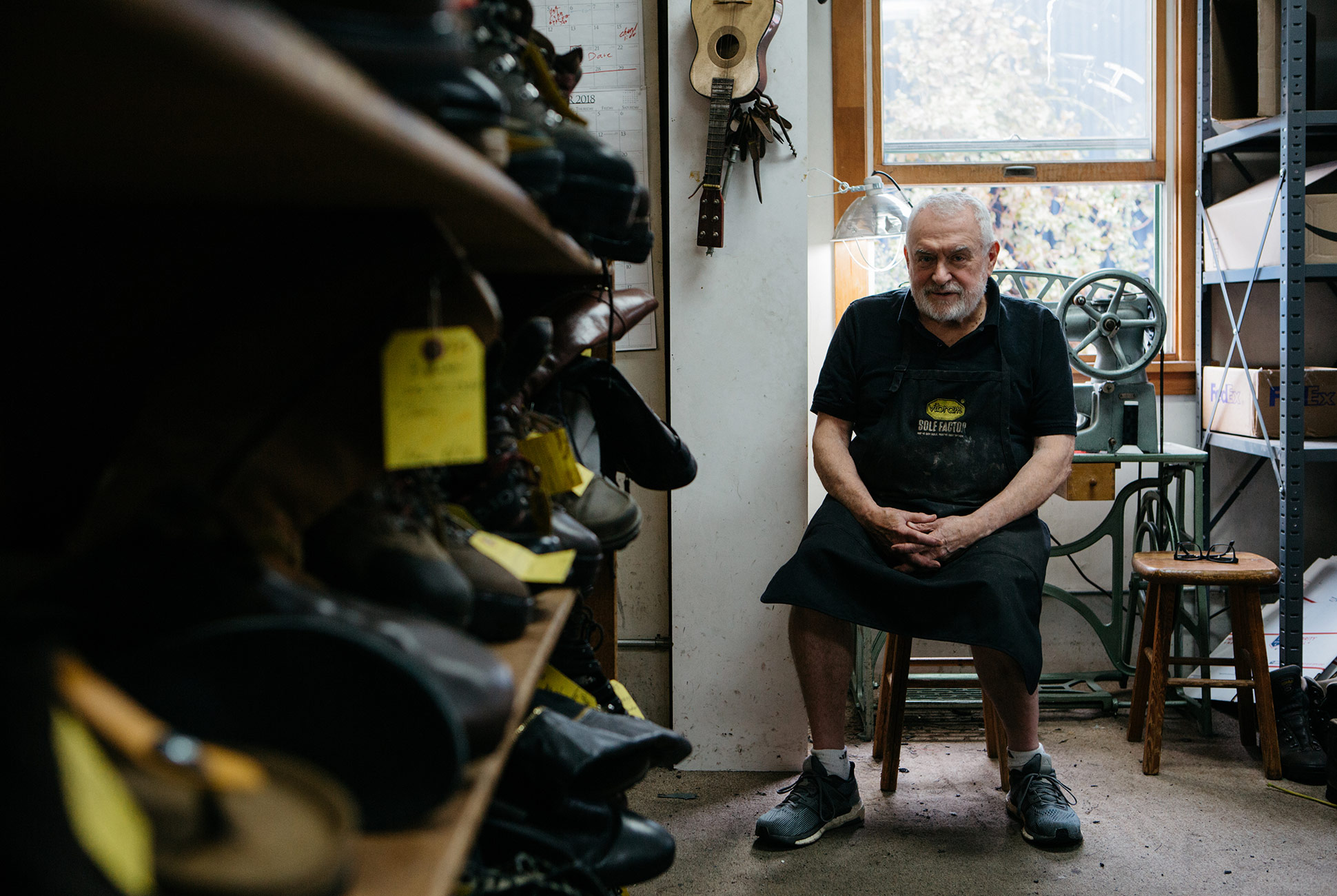
But the master himself wears Adidas sneakers and short cotton socks. That, and khaki hiking shorts, a black polo, a black Asolo apron and black-rimmed glasses. His hair is white; his beard is short and neat; he’s more short than tall. He hunches over a Sutton Rapid E curved needle stitcher. He threads it, then carefully holds up a tall brown Filson boot with a leather sole. He presses the pedal. The machine revs as he guides the bootsole through the pounding of the needle. It looks unsteady, but perhaps it’s not, and it makes a perfect shape as a waft of smoke rises from the thrashing machine. “So many people still think that I’m a little guy under a 100-watt bulb fixing their boots, and occasionally I am,” he says. “I’m asked all the time when I will I retire. I get to work with my hands, I get to see the progress I make at the end of the day. Anyway, who would I talk to?”

